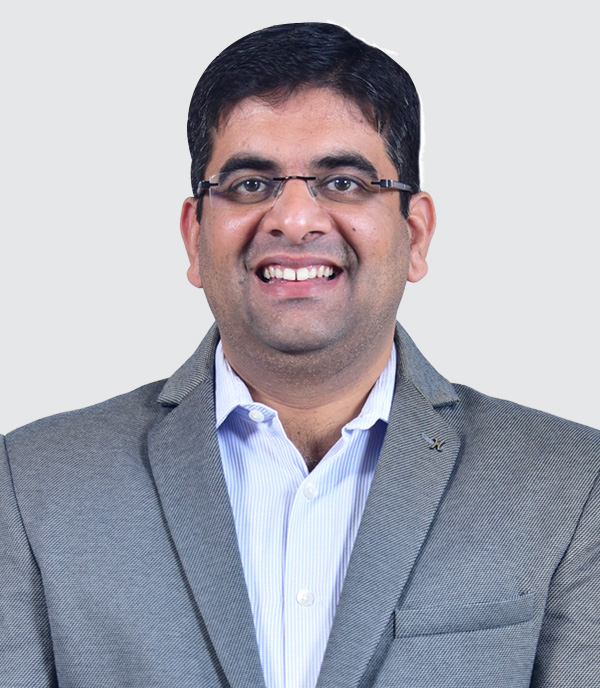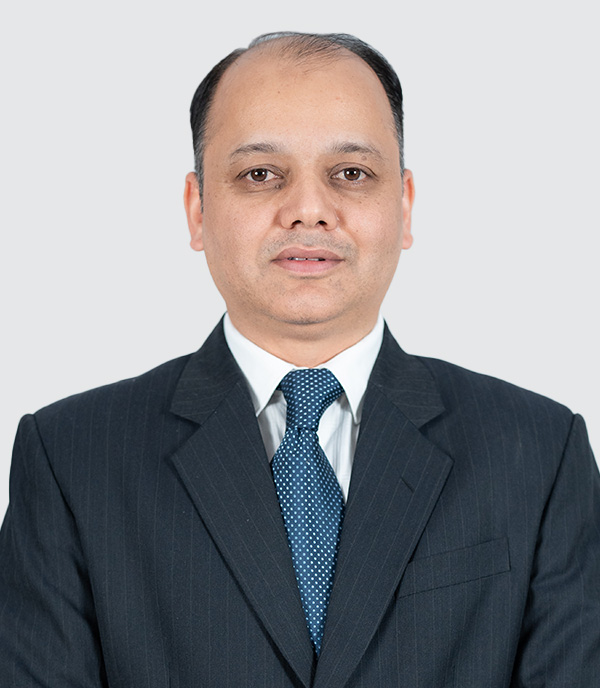Preparing for life after COVID-19: How India’s healthcare system can better respond to future shocks
by Puneet Khanduja and Mitul Thapliyal
Feb 2, 2021
7 min
India’s public healthcare system was tested by the onset of COVID-19. How India’s healthcare system can better respond to future shocks. Here are our findings and recommendations for better future preparedness.
India’s public healthcare system was tested by the onset of COVID-19. Now that a vaccine promises to bring the end phase of the pandemic (gradually) into sight, it’s time to take steps to make the system more robust and dynamic to better absorb such shocks in the future, so the country can reliably deliver healthcare to its 1.3 billion people – particularly the two-thirds who live in rural areas.
To investigate how the public health system and its beneficiaries have fared in the pandemic, MicroSave (MSC) studied low-income households in the states of Uttar Pradesh, Odisha and Bihar. These states have among the worst healthcare indicators in the country. Almost all the households we surveyed fall below the government’s poverty line, and their average monthly income was around Rs 9,800 ($130). We also surveyed community healthcare workers, called Accredited Social Health Activists or “ASHAs,” who act as an interface between the community and public health services. The study was conducted over the phone, between late June and mid-July of last year.
Here are our findings and recommendations for better future preparedness.
ISSUE 1: DISRUPTION OF ROUTINE HEALTHCARE SERVICES
One outsized impact of the pandemic was that routine primary healthcare and basic family planning services were not available for some time. On March 24, India was placed under a nationwide lockdown to curb the spread of the novel coronavirus.
Following this, local healthcare centers were either shut, or were lacking medical staff. Many hospitals and medical workers were dedicated to treating patients with COVID-19. In our study, 71% of ASHA workers said that existing resources like doctors, nurses and other paramedical staff, ambulances for referral transport, etc. had been reallocated to healthcare centers treating the virus.
The result: Pregnant women could not get their check-ups done, some were turned away when they went to healthcare centers to deliver their babies, and children could not get their vaccine shots. Around two-thirds of ASHAs said that antenatal care was not provided in their communities in April and May, and 38% reported that routine immunization services were also affected.
This disruption was a blow to India’s health mission, which places great emphasis on reproductive, maternal, newborn and child healthcare. Many of these services are time-bound: A child who misses one dose of her immunization schedule can’t make up for it later beyond a certain period. These breaks in the cycle could lead to increased morbidity and mortality among mothers and children later on.
Outreach services, like Village Health, Sanitation and Nutrition Day, were also interrupted. These events are important in creating constant messaging about preventive medicine and other healthcare services and facilities – otherwise, people in rural India quickly forget. The pandemic interrupted this essential outreach.
Also, screening tests for communicable and non-communicable diseases like tuberculosis, HIV, diabetes and hypertension were halted, according to 65% of ASHAs. And finally, family planning services were disrupted. Across the three states in our study, ASHAs said family planning commodities for community distribution were out of stock. A third of the ASHAs said that there was demand for female sterilization, but no provision – a situation that would lead to unintended pregnancies. Family planning is an essential service in rural India, and should not be disrupted.
Recommendation: To prevent these issues in the future, policymakers need to allocate more resources – and redeploy existing resources – to healthcare. India currently spends less than 2% of its gross domestic product on healthcare, among the lowest in the world.
Additionally, in a future pandemic, some hospitals can be dedicated to pandemic care, but others should be left alone to carry out routine services. Similarly, instead of deploying all medical staff to pandemic duties, a portion should remain available for other healthcare needs. Hiring contract staff for a limited period could help.
Finally, the ASHAs we surveyed reiterated some long-standing demands: There should be at least one female doctor at each primary healthcare center, and infrastructure at government hospitals should be improved. These hospitals do not have enough beds and they are crowded at peak hours, according to the ASHAs. There should also be emergency services such as ambulances available, particularly at night.
ISSUE 2: BARRIERS TO HEALTHCARE ACCESS
In the early months of the pandemic, individuals found it difficult to access healthcare due to three main reasons.
The first reason was the challenge of transport: Public transport services, such as buses and auto rickshaws, had come to a halt in the early stages of the crisis. In our study, 44% of households said they were dependent on public transport to go to their nearest hospital. One male respondent in Odisha was at wits’ end regarding a check-up for his eight months-pregnant wife. “I cannot carry my wife on the bicycle to the primary healthcare center. What should I do?” he said. Meanwhile, many people feared to use ambulances, because those were also being used to transport patients with COVID-19.
The second reason involved financial challenges: Many people lost their jobs and incomes due to the lockdown. They cut down on all expenditures, including non-urgent healthcare. In our study, 14% of the people who fell ill during the pandemic with common ailments, like gastric issues or joint pain, said they didn’t seek medical help because of the costs involved. Around 31% said they cut back on food and clothing to pay for healthcare costs, while still others said they took loans from friends and relatives, or sold their agricultural produce at steeply discounted prices. And three-fourths of respondents said they did not have any health insurance.
Meanwhile, out-of-pocket expenses on healthcare went up. People now had to buy masks. The lack of public transport, and the lack of resources at government hospitals (along with these facilities’ poor quality of service) pushed people to more expensive private clinics. For instance, some respondents to our survey went to a private hospital due to the lack of X-ray and ultrasound test facilities at their primary health center. Among the respondents who fell ill during the lockdown, 59% said they went to private providers. They found that some doctors had increased their fees by 5%-10%, while the cost of medicines rose by 10-15%.
One ASHA worker from Bihar said that when she took a tuberculosis patient to the primary health center, the staff was busy with COVID-19 patients, and asked them to visit the next day. The following day, she said they took a sample and referred the patient to a district hospital in another town. “The patient got irritated and went to a private lab,” she said.
The third reason involved social stigma: Many respondents delayed going to the hospital for any ailment, because of the social stigma attached to it — neighbors might think they had COVID-19. “If I get COVID-19, people will look at me as if I have made a blunder and failed to protect my family,” said one male respondent from Odisha.
In our poll, 42% blamed the pandemic for restricting their access to healthcare. And around 71% of our respondents believed that hospitals were hotspots for contracting infections. A small fraction — 12% — even believed that hospitals were only treating COVID-19 patients.
Recommendation: Each of these obstacles to healthcare access can be addressed by targeted interventions.
First, more households should be brought under the government’s insurance programs, to reduce the burden of out-of-pocket healthcare costs.
Second, the availability of transport like ambulances should be streamlined, to compensate for the interruption of public transport system during pandemics.
Third, communication should be stepped up. In addition to the government’s existing efforts on Information Education Communication and Behavior Change Communication, policymakers can introduce Social Behavior Communication interventions to alleviate people’s fear of COVID-19 (and future viruses) and their associated social stigma.
In rural areas, people easily forget about the need for prevention and immunization, so it’s essential to keep pushing that message. This will be especially important in the coming year, to make people open to vaccination against COVID-19.
ISSUE 3: CHALLENGES FOR FRONTLINE HEALTH WORKERS
ASHAs have been on the frontline of India’s fight against the pandemic, but their work, especially in the early days, has been fraught with challenges.
On the one hand, they could not fulfill their basic tasks, like escorting pregnant women to the nearest primary healthcare centers. On the other hand, they were asked to pitch in with COVID-19 related tasks, like conducting household surveys to seek out infected people – but without training and safety equipment.
Recommendation: We propose several policy changes to strengthen the standing of ASHAs, starting with providing them a minimum income, health insurance and equal treatment with formal employees of the government healthcare system. (ASHAs are not government employees, and have traditionally been paid incentives for facilitating healthcare service uptake.)
In addition to resolving the specific challenges mentioned above, the government can use technology, and specifically telemedicine, to take care of people’s basic healthcare needs. Most of our survey respondents felt positively about the idea of getting a medical consultation over the phone, though some were skeptical about how they would know if the person on the other end was a doctor. Telemedicine was more acceptable to those who live farther away from their primary healthcare center, and those who were dissatisfied with the existing government healthcare system. But though digital tools like telemedicine can be a solution for issues that surface during a pandemic lockdown or for similar emergencies, they are not an alternative to routine healthcare services. Since there are many challenges to this approach, involving digital literacy, smartphone access, internet penetration, connectivity challenges, etc., we propose it as an addition – not a replacement – to existing services.
The COVID-19 pandemic has taught India many hard lessons about the gaps in its current healthcare system. But in the process, it has highlighted some promising potential solutions, while focusing the attention of policymakers and other players on the need to plan for future pandemics and other emergencies. If this focus can be sustained after the current crisis has ended, the country’s healthcare system will be better prepared for the next one – which might already be lurking, even as we continue to cope with the current one.
This blog was also published on Nextbillion on 01 February 2021
Written by

Puneet Khanduja
Senior Manager
 by
by  Feb 2, 2021
Feb 2, 2021 7 min
7 min
Leave comments